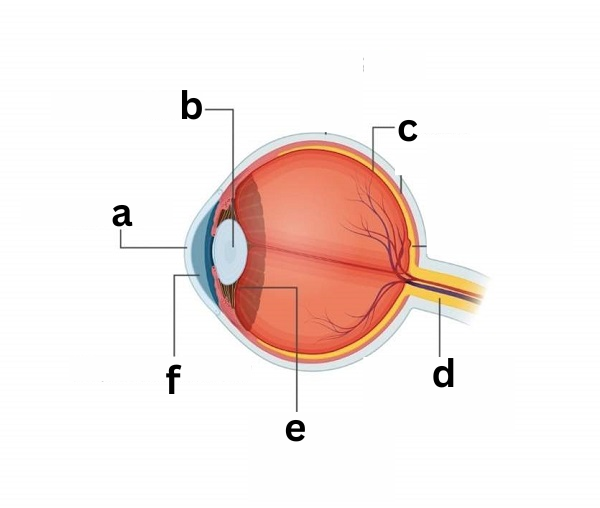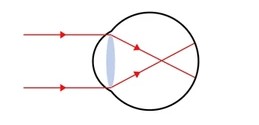4 • Defects of / Helping The Eye
1/21
There's no tags or description
Looks like no tags are added yet.
Name | Mastery | Learn | Test | Matching | Spaced |
|---|
No study sessions yet.
22 Terms

Label This Image
The Eye
a - cornea
b - lens
c - retina
d - optic nerve
e - ciliary muscle
f - iris
Define The Power of Accommodation of the Eye
The human eye can form images of objects at distances from it in immediate succesion
Define Near Point of The Eye
The nearest point at which an object can be seen clearly by the eye
How far is that Near-Point of the eye
25cm from the normal eye
Define Far Point of the Eye
The furthest point at which an object can be seen clearly by the eye
Define Range of Vision
Objects located between the near and far point can have an image formed on the retina by the eye

Label This Image
The Range of Vision
a - Far point
b - Near Point
c - Range
d - 25cm

Name the defect of this eye
Near / Short sighted
Define Near Sighted / Short Sighted
Far is point is too near - distant objects cannot be seen clearly
Describe the image within a Near Sighted Eye
Eyeball is too long so the image if a distant object forms in front of the retina
How can Near Sighted-ness be Corrected?
Diverging Lens

Name the defect of this eye
Far / Long sighted
Define Far Sighted / Long Sighted
Near point is too far - close objects cannot be seen clearly
Describe the image within a Far Sighted Eye
Eyeball is too short causing the image t be formed behind the retina
How can Far Sighted-ness be Corrected?
Converging Lens
Name 2 Optical Instruments
Microscope
Telescope
Define the function of a Microscope
Viewing very small objects
Define the final image of a microscope
Final image formed at near point
Name the types of microscopes
Magnifying glass
Compound Microscope
Define the function of a Telescope
Viewing distant objects
Define the final image of a telescope
Final image formed at far point
Name the types of telescopes
Astronomical
Terrestrial